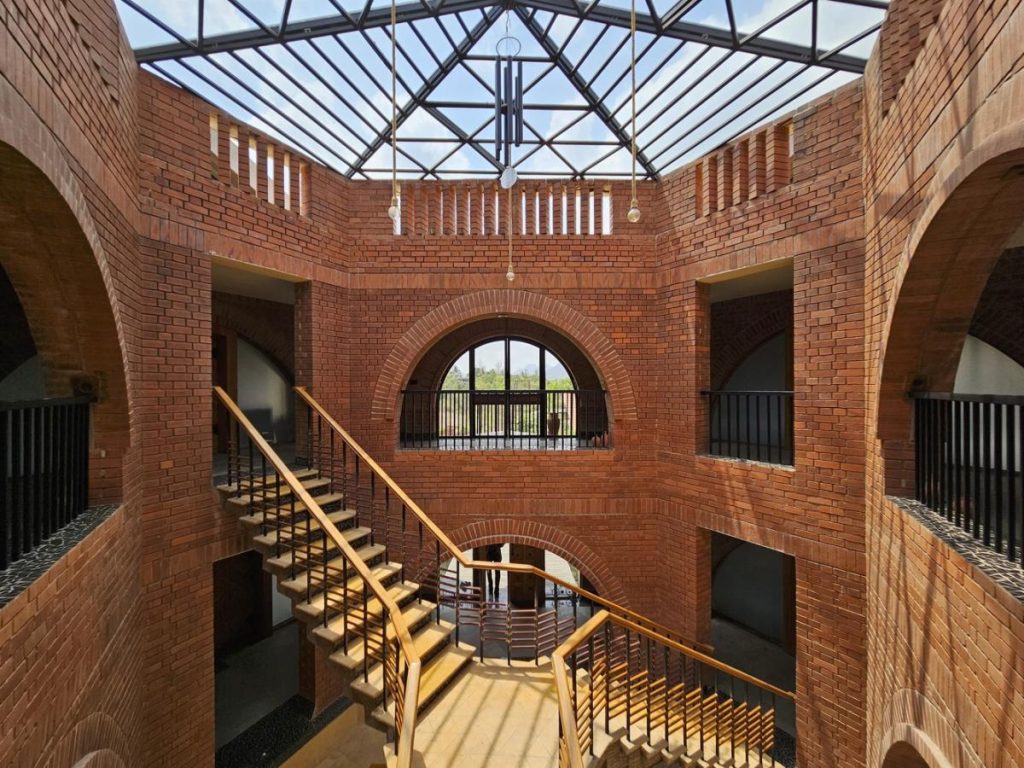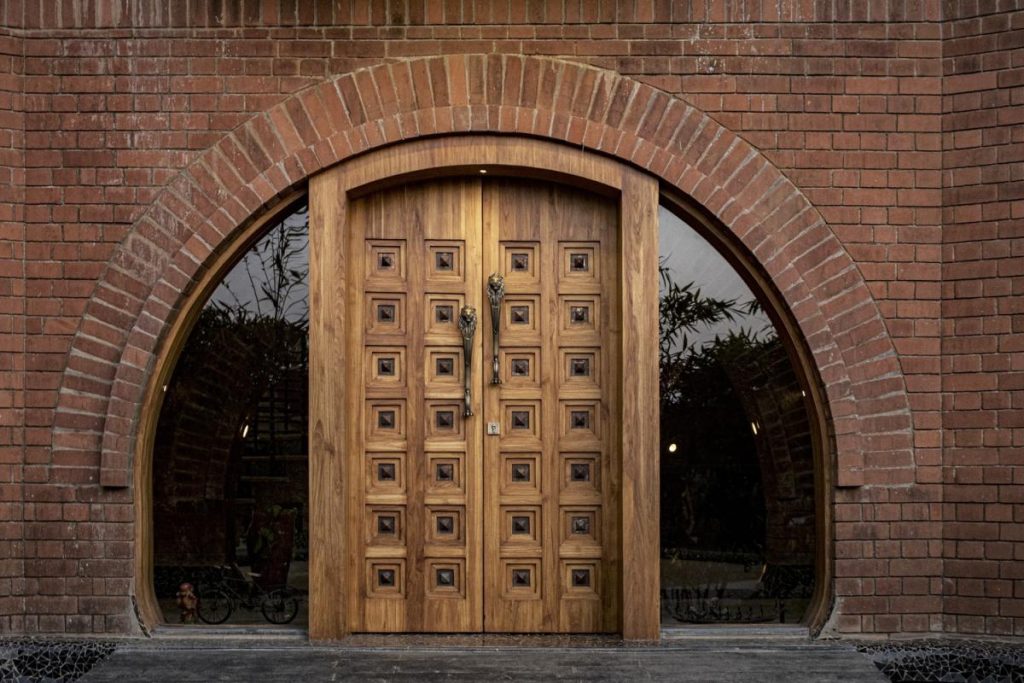Mountain Dust, a country home designed by Architect Mahesh Naik is based on a squarish and triangular grid, forming a Triskelion geometrical system balanced by the landscape’s circular geometry
The idea was to stitch the house (the Man) with the three attributes- the huge towering mountain, the sun rising, and the moon. This led to a sacred knot – a Triskelion geometry for the house. This geometrical system gives the house more surface area, giving a maximum 360-degree view of the surrounding mountains.

The dwelling serves as a country home for Mr. Alreja and his family, who primarily live in Mumbai. The 20-acre site is situated at the foothill of Matheran Hills. The site drops 110 feet from the top of the drive to the water edge. This countryside farmhouse consists of a six- -bedded house, surrounded by a common retro, glamping area, swimming pool, service block, staff quarters, water reservoir, a large meadow, sacred groove, and wild, untouched woods on the clift till the river edge.
At the heart of the house is an ample light-filled triangular atrium, around which the whole house revolves; other spaces extend outward in three directions towards nature, forming a sacred triskelion geometry to get a maximum vista of the surrounding mountain. Thus, this house exhibits introverted central and extrovert spaces at the periphery extending outward and merging into nature. These six-bed country houses have three bedrooms, a pantry, and living space on the ground floor and three bedrooms on the first floor.

Each bedroom has two triangular balconies with a compact yet dynamically angled bathroom built adjacent to it. The house opens into a massive deck on the east side and is well-shaded by its mass during peak afternoon hours. The pavilion at the edge of the deck provides shelter and a panoramic view of the Matheran mountains with the changing backdrop of rising sun and moon. One can access the swimming pool area and glamping site from the deck below. The cantilevered sloping roof on the three sides of the house shields the structure from the vagaries of the weather.
The rich arch openings with M.S. hollow box pipe and clear glass allow plenty of natural light, merging the house with the surrounding landscape. This house is a great way to experience nature. A minimal natural material palette was decided to achieve simplicity and a bucolic feel. Black basalt stone foundation, earth red bricks for a wall, black china mosaic roof, kota stone flooring with black china mosaic border along the wall, yellow Jaisalmer stone for the central staircase, beige Shahabad stone for deck, black river sand finish granite stone along with black basalt stone walls for toilet became the palette for the house.

The material’s colours – red, beige, and black became the central theme. To increase the green cover of the property, more than 2000 trees were planted over three years during house construction. Indigenous plants were preferred for plantation as they require less maintenance and even have medicinal properties. The landscape around Mountain Dust has been kept random and raw to retain a natural feel. Various earth mounts have been placed strategically to control the scale of the house and achieve house privacy from the outside, as well as depicted as miniature mountains mimicking the Matheran hills.
The driveways and pathways were made in circular geometry to divide into various zones. Man exists in a rhythmic pattern, and so does his art form. House geometry plays an important role in instilling harmony and tranquillity. The house geometry of Mountain Dust is based on a squarish and triangular grid – forming a Triskelion geometrical system balanced by the landscape’s circular geometry.




GIPHY App Key not set. Please check settings